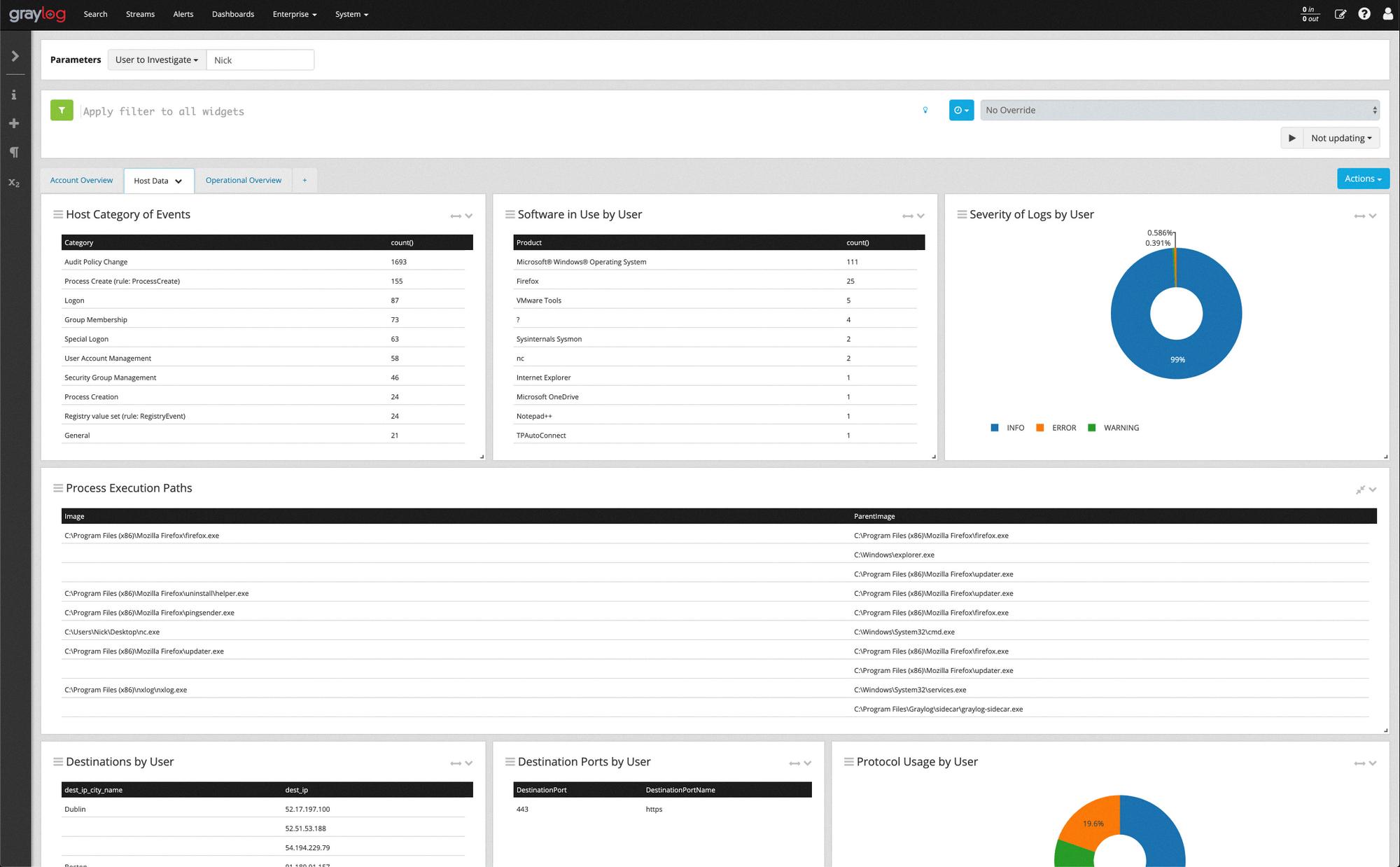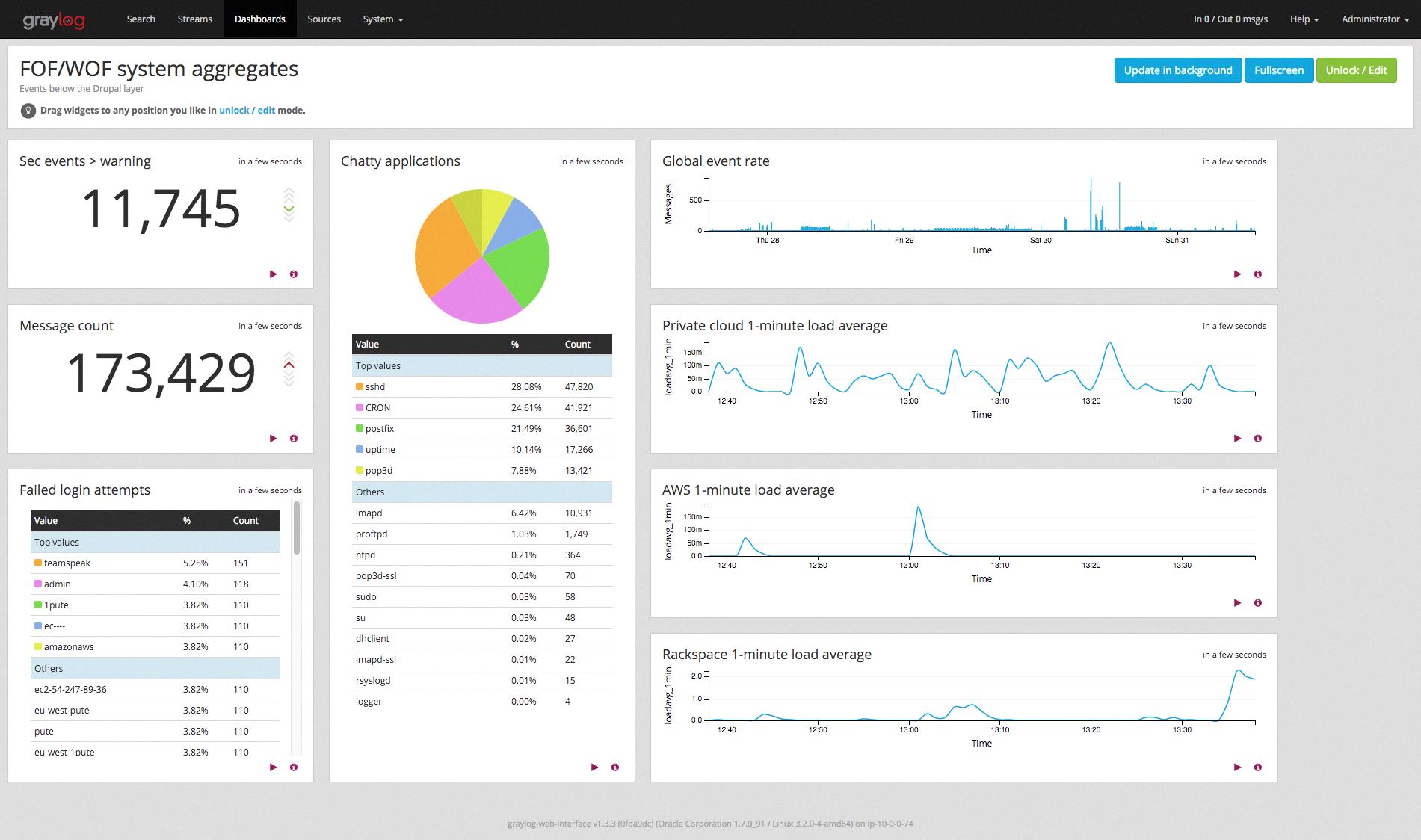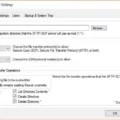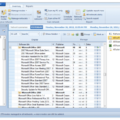Welcome to the world of Graylog, an open-source log management system that helps organizations make sense of their data. Graylog is purpose-built for modern log analytics and has been designed to remove complexity from data exploration, compliance audits, and threat hunting. With its advanced search functions, users can query and analyze both real-time and historic logs quickly and easily.
At its core, Graylog offers users an intuitive web interface that allows them to streamline their data exploration process. It also features an alerting framework that can be used to detect anomalies or suspicious events in logs. Additionally, Graylog allows for complex searches using structured queries for more fine-grained analysis.
Graylog is available in two versions: Open Source (which is free) and Operations & Security (which requires a license). The Operations & Security version offers additional features such as role-based access control, audit logging, and custom dashboards for monitoring performance metrics. It also comes with a free 2GB/day license for small businesses.
Graylog can be used with a variety of different message sources including syslogs from applications, web servers, firewalls, databases, etc., as well as input plugins such as Kafka and GELF (Graylog Extended Log Format). Once the log messages are received by Graylog they are parsed into structured data which makes them easier to query and analyze. Furthermore, it also enables users to configure alerts based on predetermined conditions so they can take action faster when needed.
Overall, Graylog is an invaluable tool for anyone looking to gain insights from their log data quickly and efficiently. Whether you need it for compliance audits or threat-hunting purposes – it’s definitely worth checking out!
Uses of Graylog
Graylog is used for log analytics and monitoring, as well as compliance audits, security monitoring, and threat hunting. It makes it easier to collect, store, and analyze log data from multiple sources. This allows organizations to gain insights into their operations and security posture quickly, easily, and securely. Graylog also helps ensure compliance with regulatory requirements by providing alerting capabilities and automated reporting capabilities. Additionally, Graylog’s powerful search capabilities make it easy to find the root cause of problems quickly and accurately. Finally, Graylog can be used to detect potential security threats before they become a problem by analyzing logs for suspicious activity or anomalous behavior.

Source: support.websoft9.com
Is Graylog Free?
Yes, Graylog Open is free to use and does not require a license. With Graylog Open, you can get started quickly and easily with collecting, analyzing, and alerting your log data. For larger businesses, we offer Graylog Operations and Graylog Security, both of which require active licenses. However, we also have a free 2GB/day license of Graylog Operations available for small businesses.
Comparing Graylog and Splunk
Yes, Graylog and Splunk are similar in many ways. Both systems offer powerful search capabilities for querying and analyzing data, either in real-time or through historic logs. They both feature advanced search functions for finding specific information quickly, such as terms, phrases, keywords, and other data points. Additionally, Graylog and Splunk both offer a range of alerting options to notify users when certain criteria are met. Lastly, they both provide comprehensive dashboards to visualize data insights and trends. While the underlying technologies that power these two systems may differ slightly, they offer similar features and capabilities overall.
When Is Graylog Appropriate to Use?
Graylog should be used when you need to collect, analyze and store large volumes of log data. It is especially useful for applications that produce a lot of machine-readable log data as it can parse this data into structured information and make it easier to search and analyze. Graylog also allows you to set up custom alerts that will notify you when specific criteria are met, making it a great tool for monitoring. Additionally, Graylog integrates with other tools such as Splunk, Elasticsearch, and MongoDB, making it an ideal choice for organizations that need to collect and analyze log data from multiple sources.
The Use of Graylog as a Monitoring Tool
Yes, Graylog is a monitoring tool. It’s an open-source log management platform based on Elasticsearch that provides an efficient way to collect, index, and analyze logs from various sources in real time. Graylog can be used to monitor the technical state of web applications by collecting log data from the application and other systems, such as application servers, databases, and web servers. With Graylog’s powerful search capabilities, you can easily identify errors, performance issues, and security threats in your application environment. Additionally, you can use Grafana to visualize data collected by Graylog and gain further insight into the state of your system.
Does Graylog Utilize Java?
Yes, Graylog is based on Java and uses Java as its core programming language. Graylog leverages the power of Java to provide an efficient and reliable way of collecting, storing, and analyzing log data. It also provides a comprehensive API that allows developers to extend the capabilities of the platform beyond what is available out of the box. Additionally, Graylog also uses MongoDB for application data storage, as well as Elasticsearch for storing log messages.
Who Benefits from Using Graylog?
Graylog is a powerful log management and analysis platform used by many organizations of all sizes. It is particularly useful for mid-sized companies (51-1,000 employees) as it provides an easy-to-use and cost-effective solution for managing and analyzing their logs. Some of the benefits that Graylog offers include faster troubleshooting, improved security, quicker incident response times, and easier compliance with industry regulations. Additionally, its open-source nature makes it highly customizable and allows organizations to tailor it to their exact needs. With Graylog, IT teams can quickly search through millions of log entries in seconds to identify issues or detect suspicious activity. The platform also provides dashboards and reports to help users get quick insights into their data.

Source: blog.riff.org
Sending Data to Graylog
In order to send data to Graylog, you will need to complete the following steps:
1. Create an Input in Graylog. This can be done by navigating to System -> Inputs in the Graylog web interface and selecting an appropriate type of input from the list provided.
2. Create a Content Pack and export it. This can be done by navigating to System -> Content Packs in the Graylog web interface and clicking on the “Create Content Pack” button.
3. Upload the Content Pack. This can be done by clicking on the “Upload Content Pack” button which is located at the bottom of the page when you are creating or editing content packs.
4. Configure the GELF library for the Logback library. You can do this by adding GELF library dependencies to your project and configuring it according to your project requirements.
5. Configure logback.xml file with appropriate settings for sending logs to the Graylog server via GELF protocol, like a port number and host address, etc.
6. Run your application and check if logs are being sent successfully to the Graylog server or not, which can be verified by navigating to System -> Inputs page in the Graylog web interface where you should see your configured input running successfully along with received logs count increasing continuously as they are sent from your application through GELF protocol over UDP/TCP/HTTP transport layer protocols as per configuration set up in log back file of your application project.
Conclusion
In conclusion, Graylog is an effective and reliable solution for log analytics, compliance audits, threat hunting, and more. It is free to use with the Open version and a 2GB/day license of Graylog Operations is available for small businesses. It can be used to easily query and analyze data in real time or through historic logs. Graylog also supports custom searches using structured queries, making it a great tool for working with raw strings such as syslogs. All in all, Graylog is an excellent tool for managing large amounts of data quickly and efficiently.








